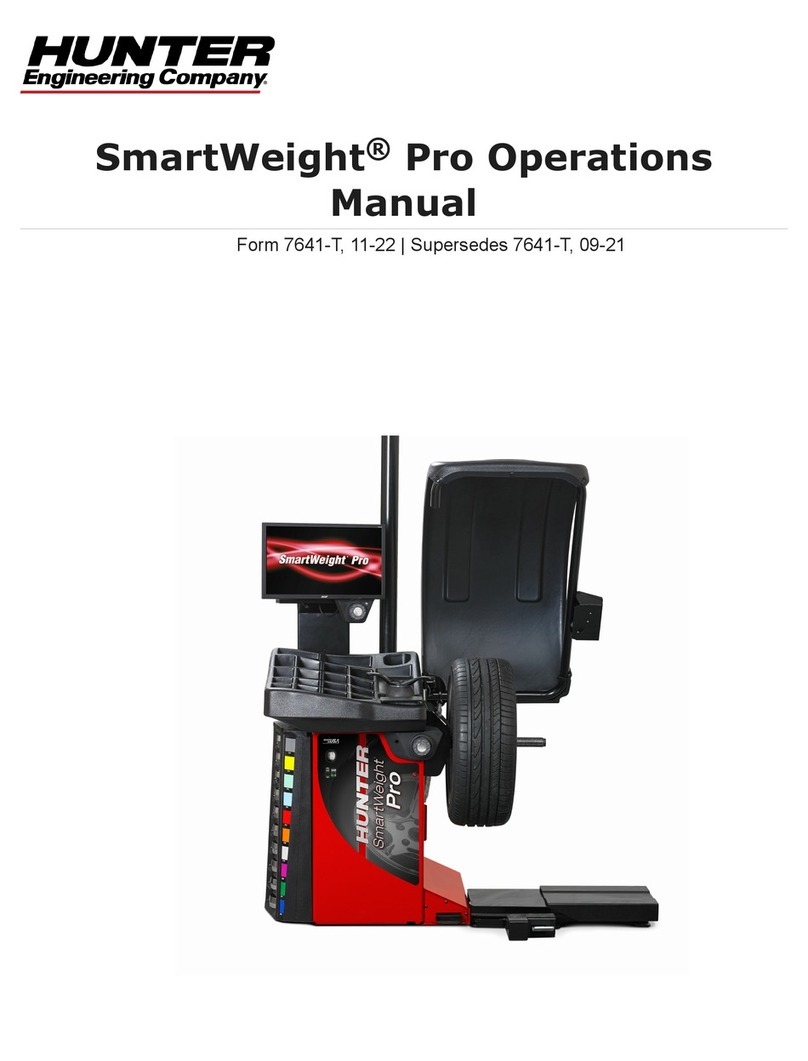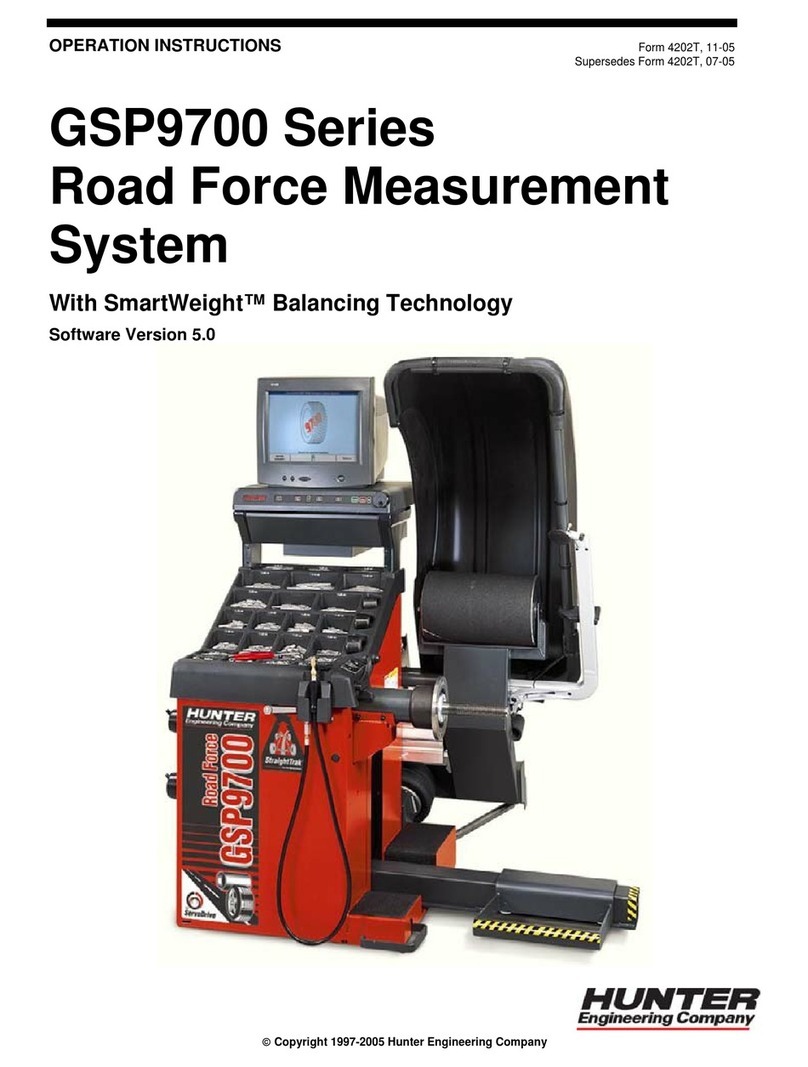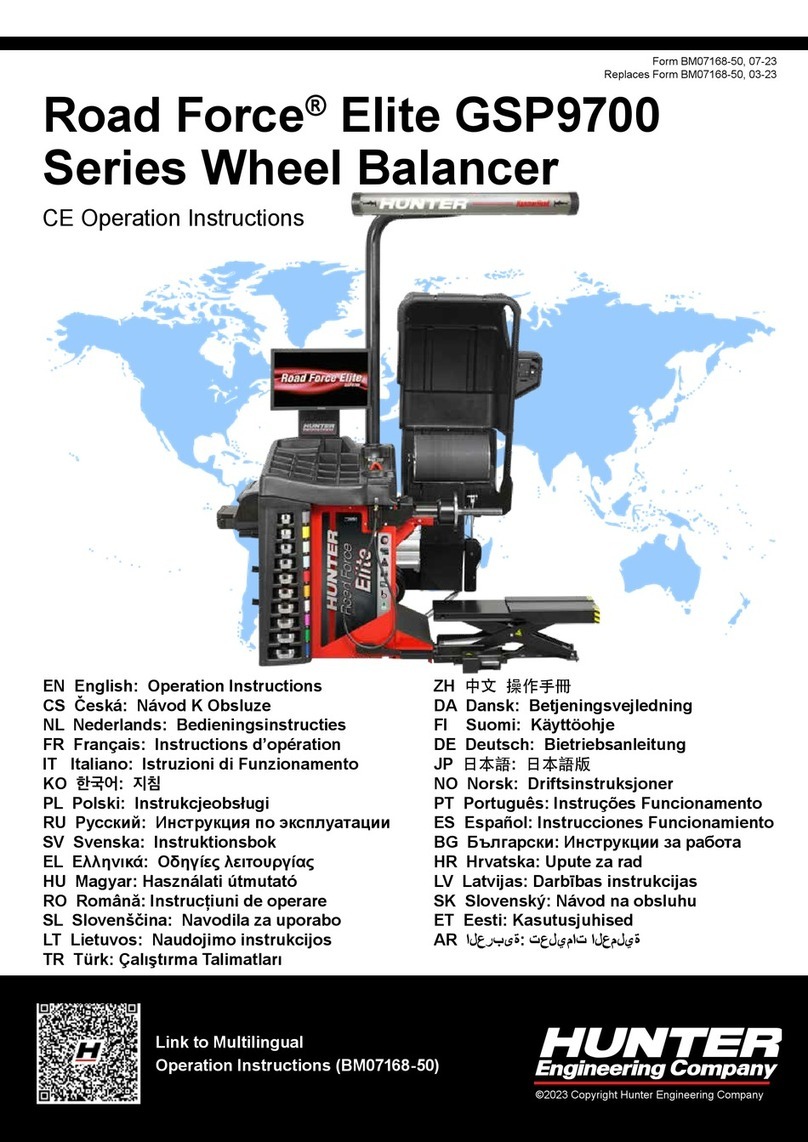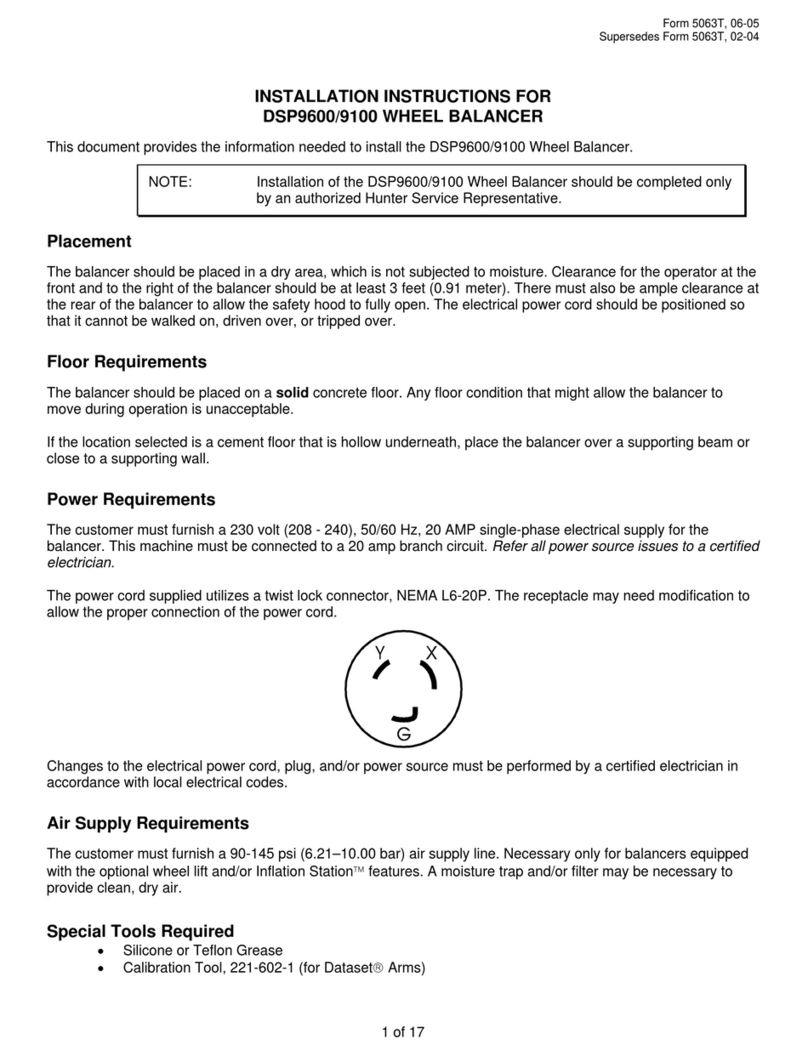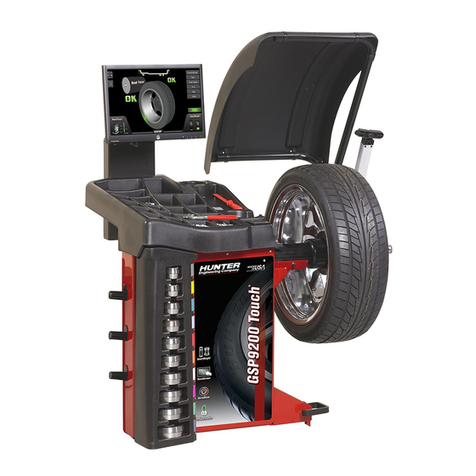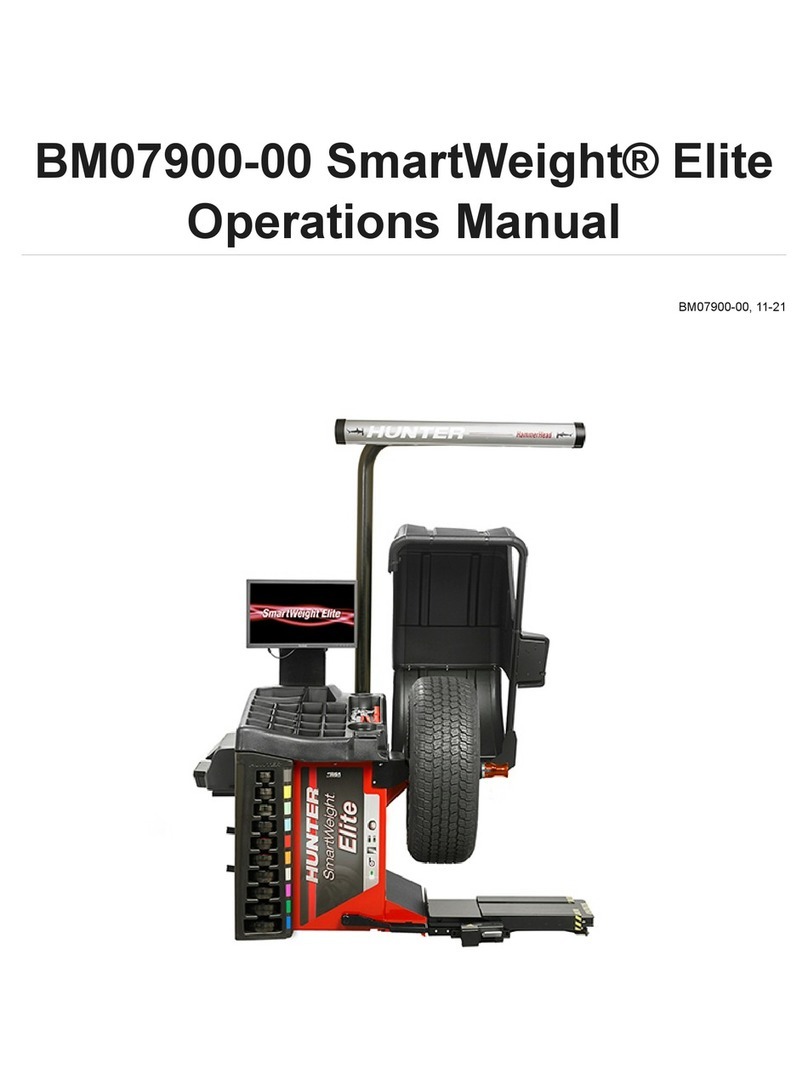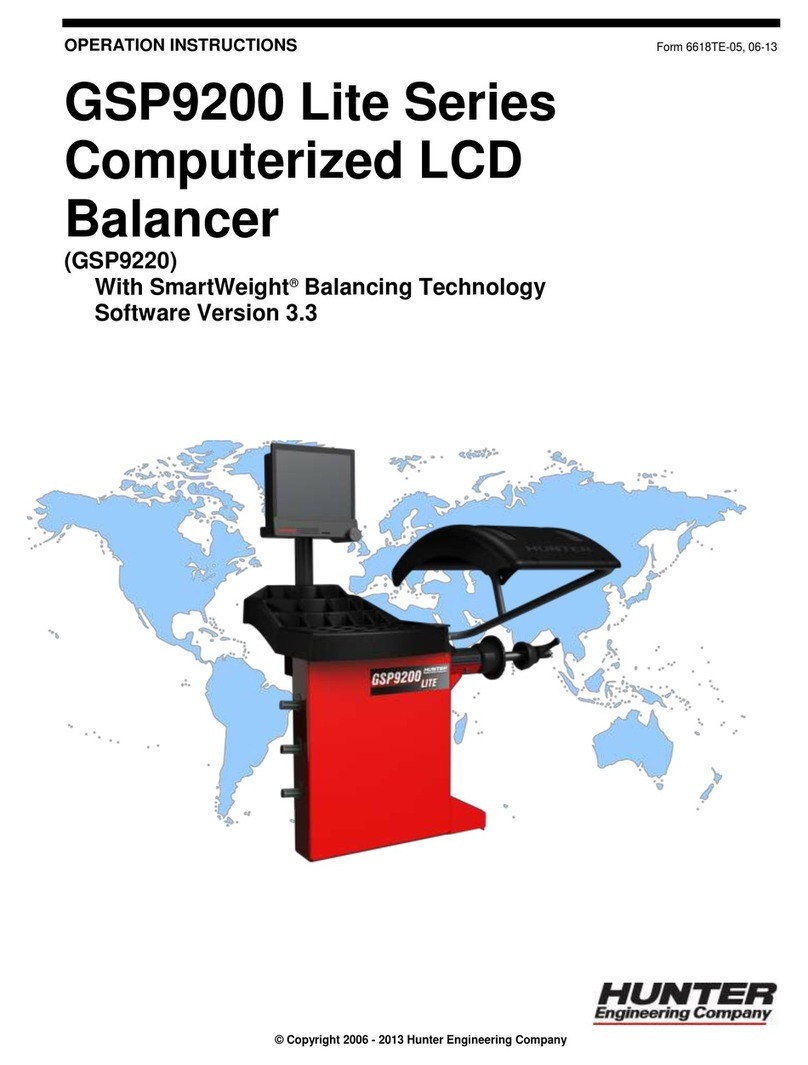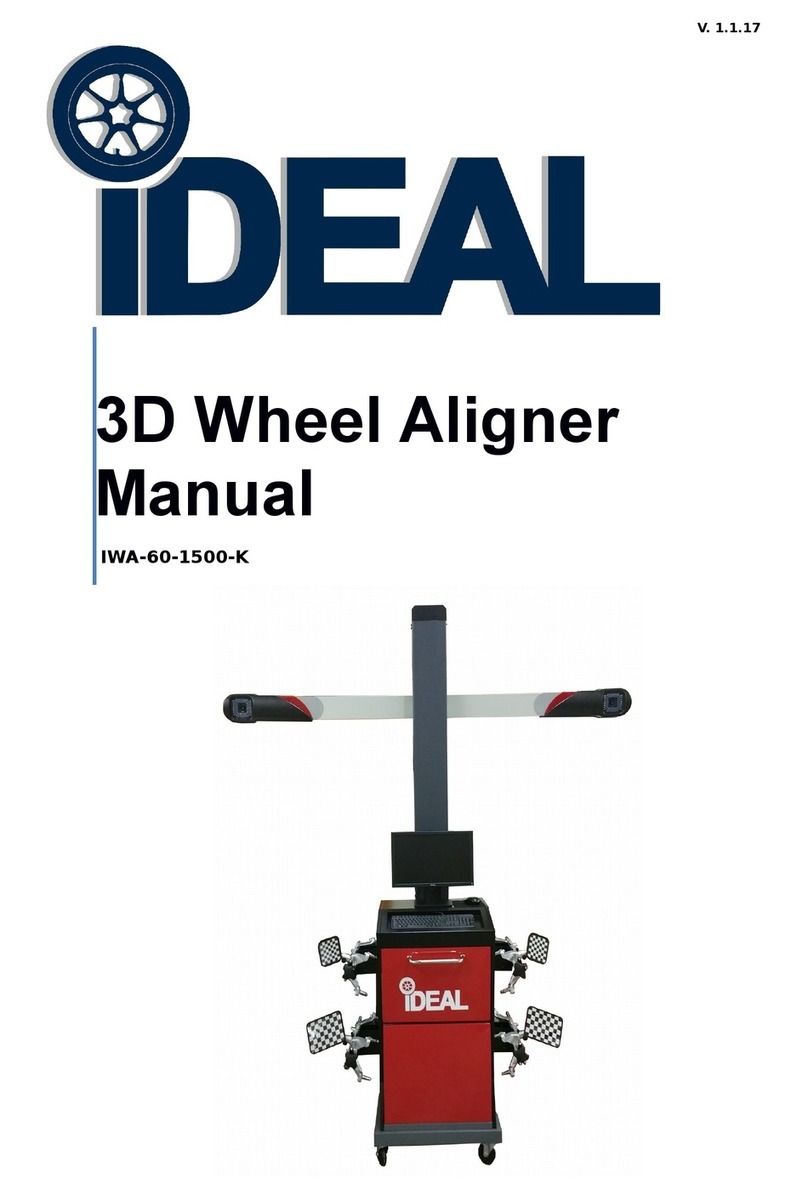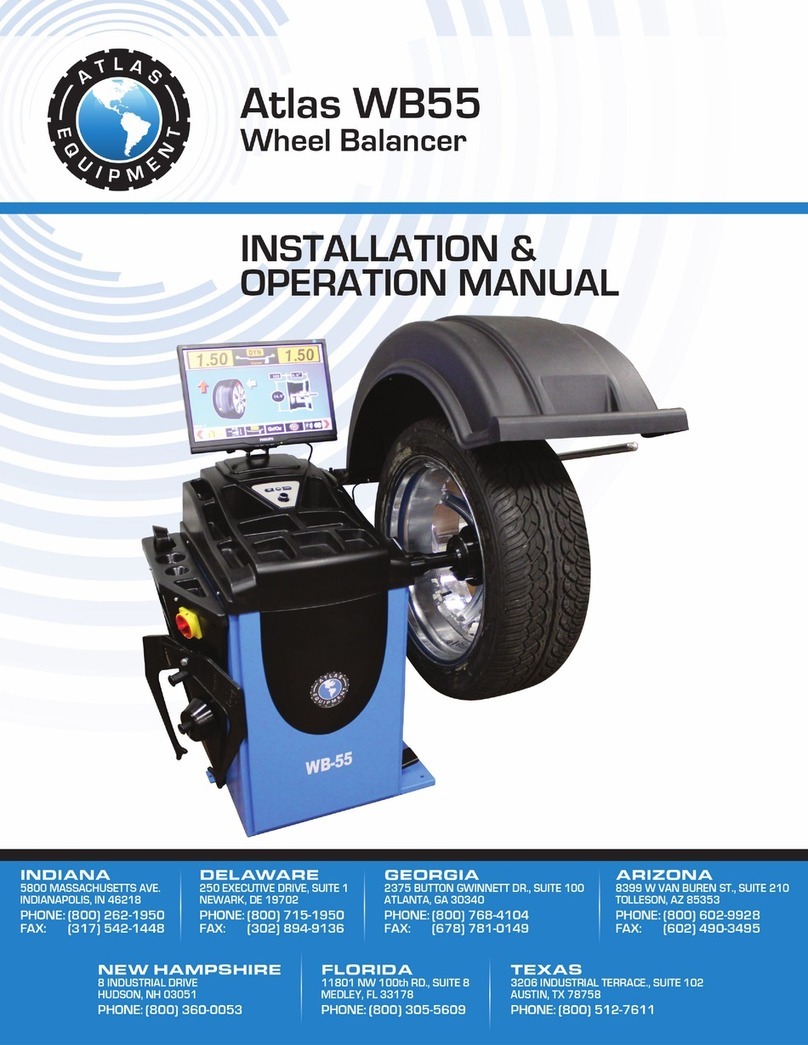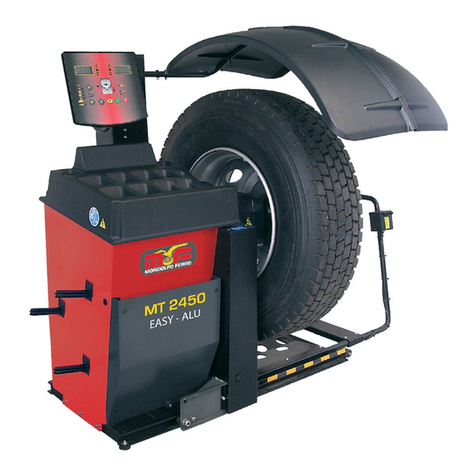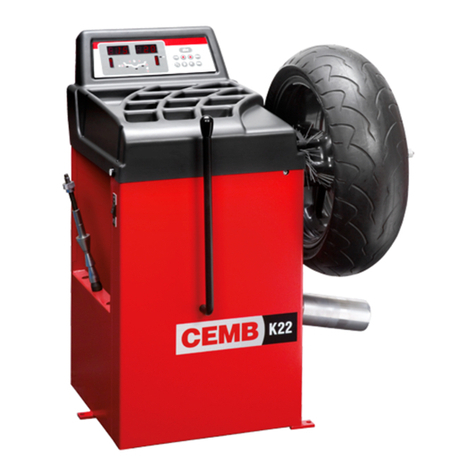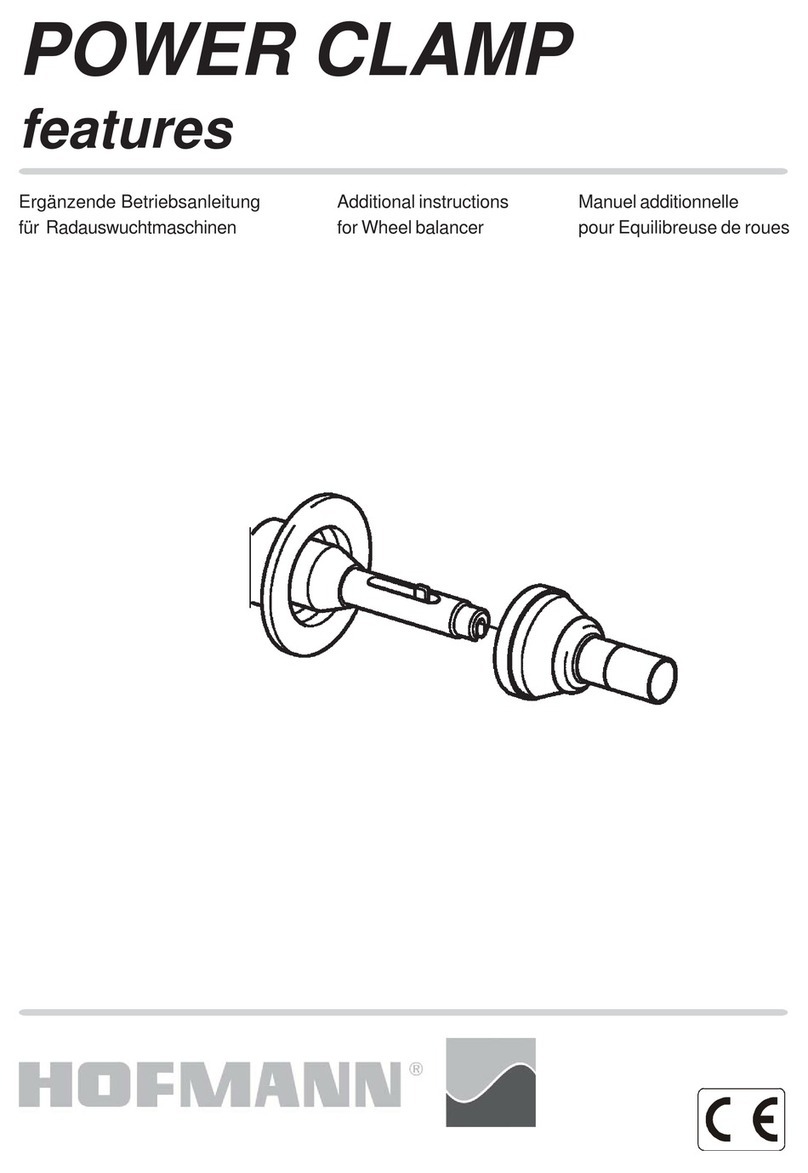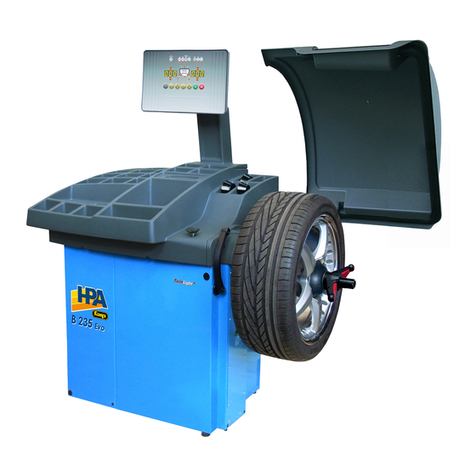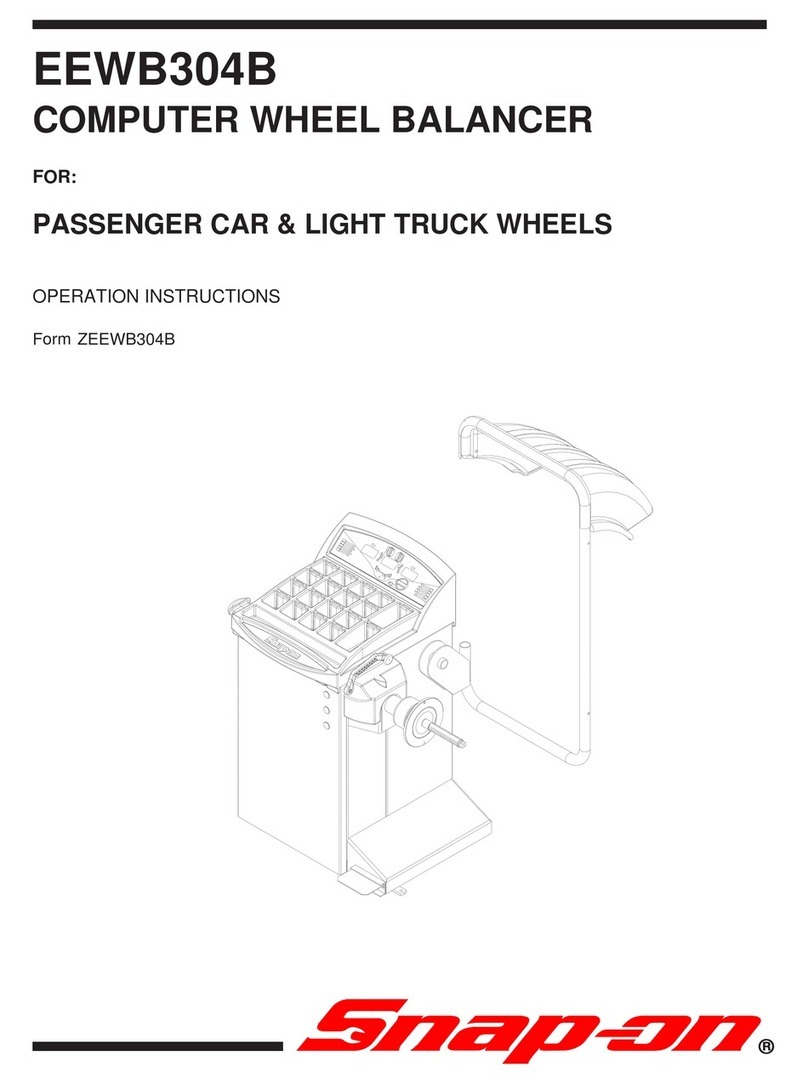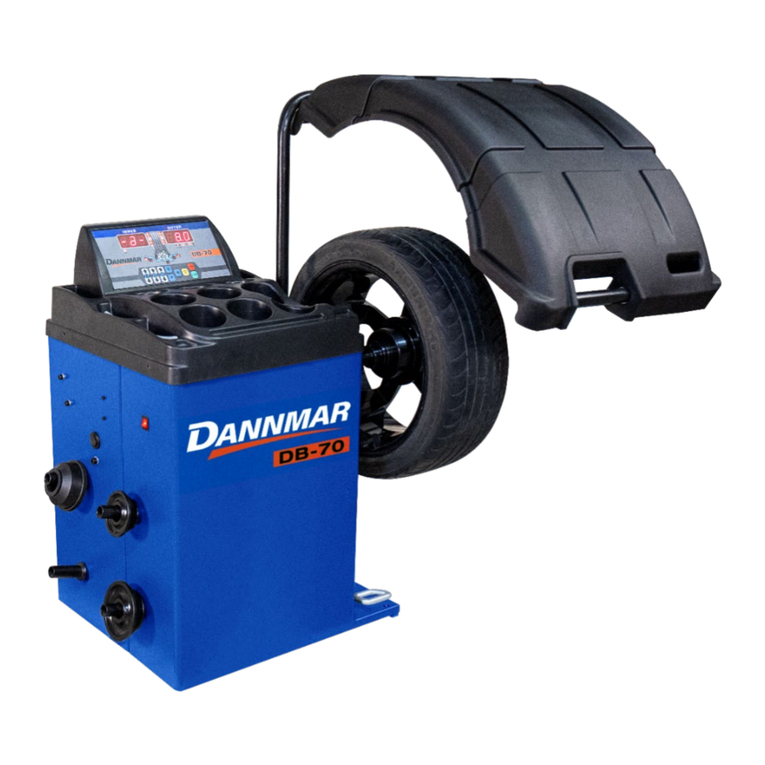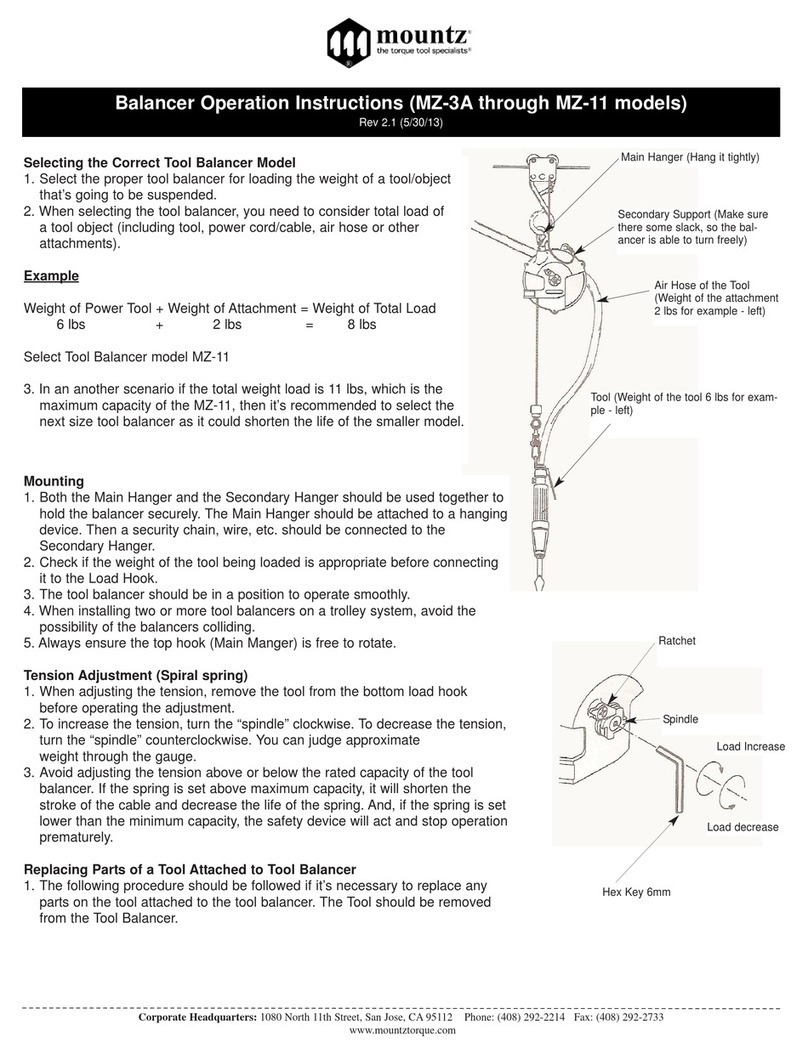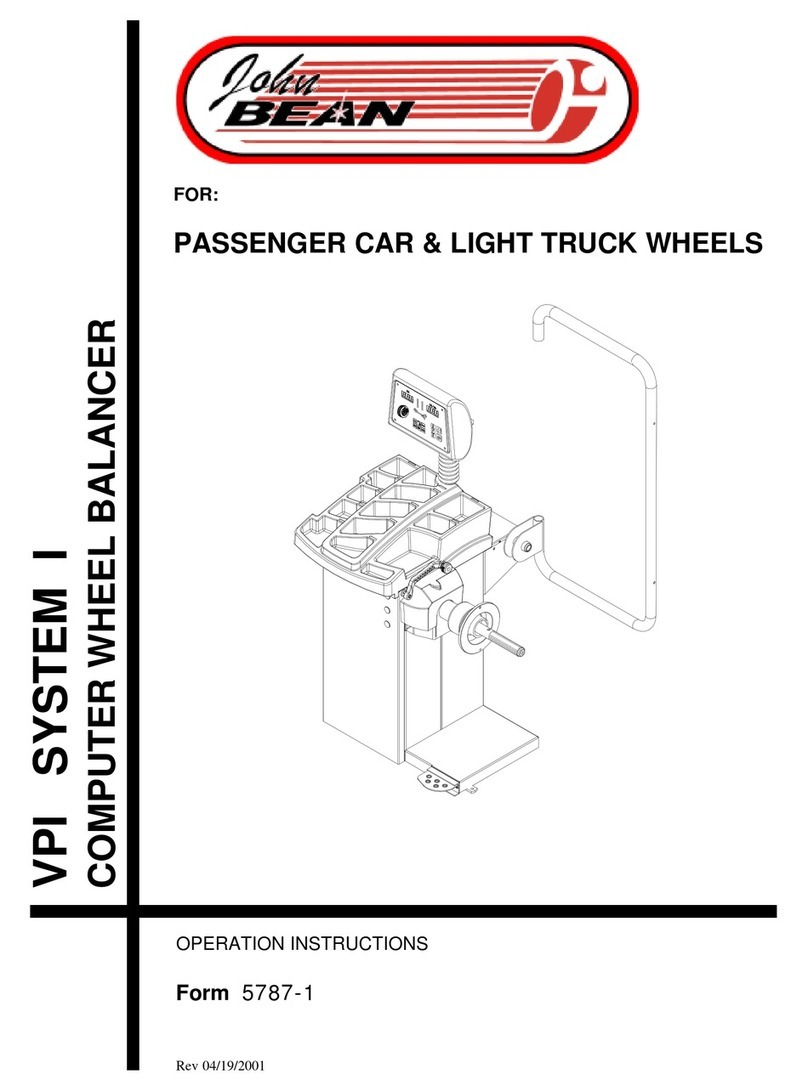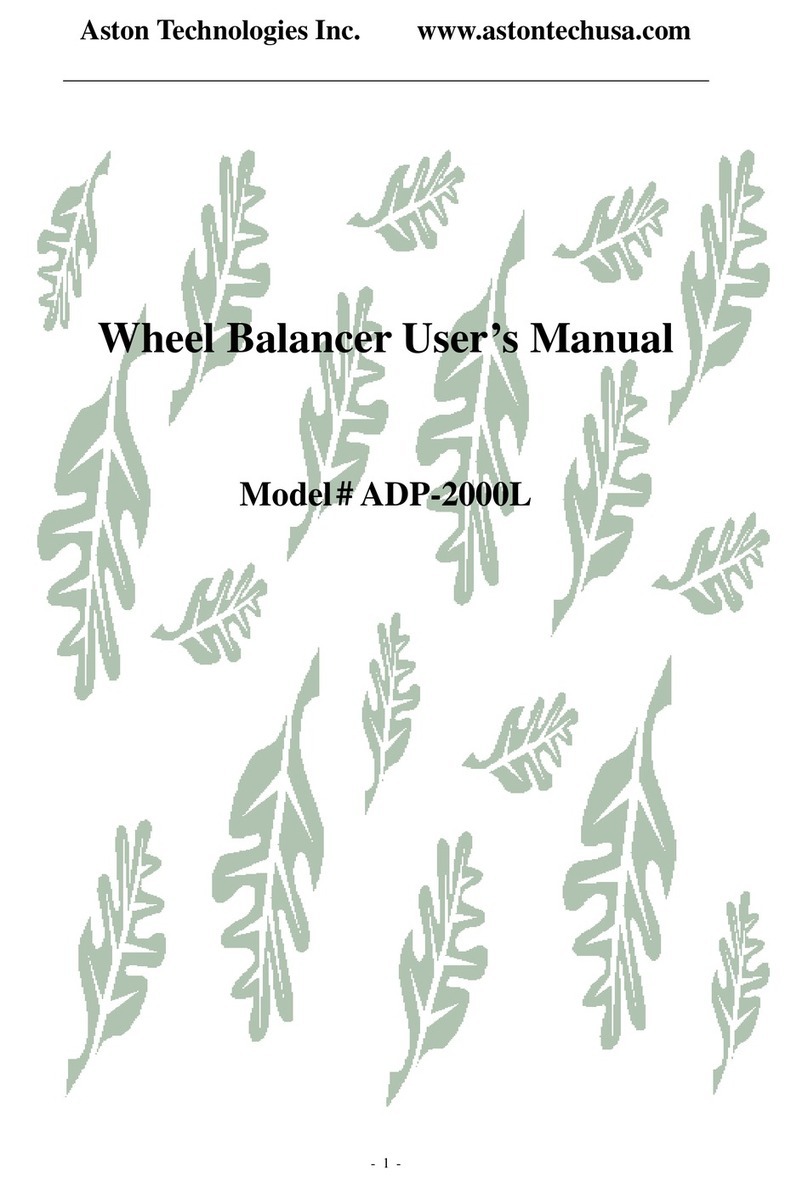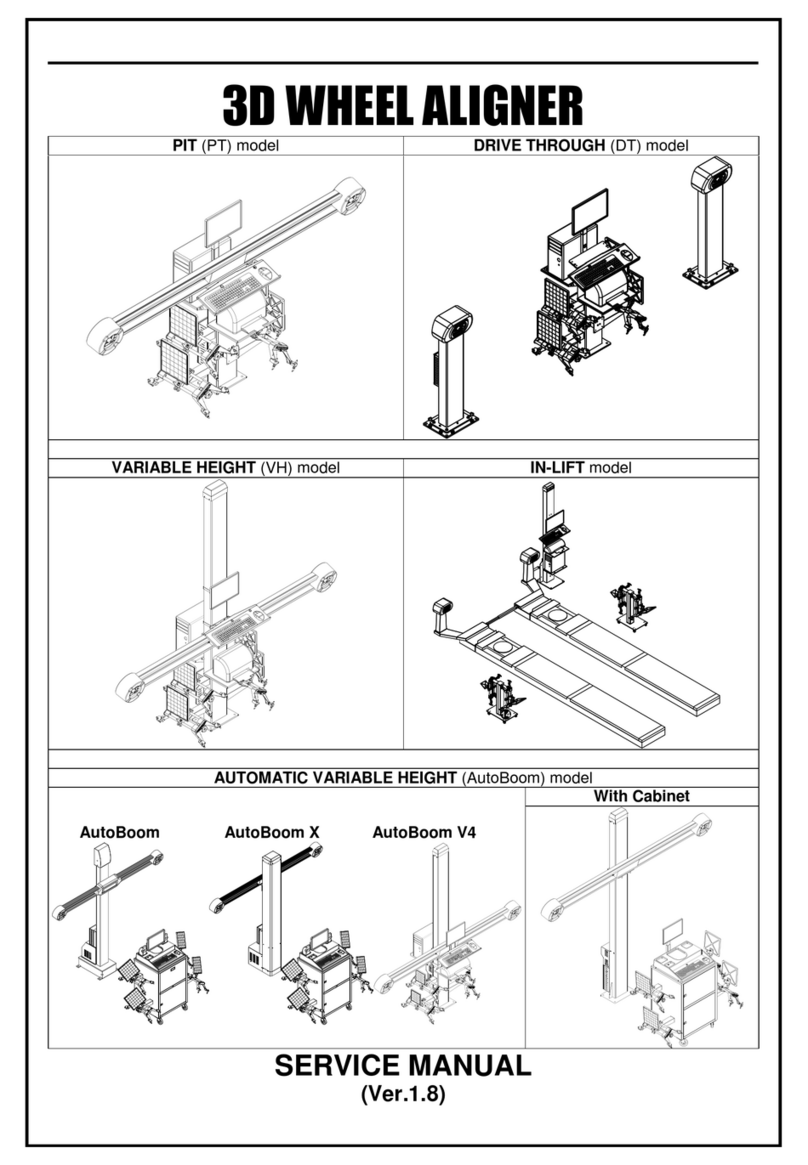
Do’s and Don’ts of Road Force® Measurement.................................................. 88
4.4 QuickMatch® Tire and Wheel Mounting .............................................................. 89
Road Force Audit Mode ....................................................................................... 89
QuickMatch® Procedures .................................................................................... 90
QuickMatch® Using Previous Bare Rim Measurement....................................... 90
QuickMatch® Using Previous Loaded Runout Measurement ............................. 91
Dial Indicator Gauges Feature ............................................................................. 91
Lateral/Radial Rim High Spot Indicators Feature ................................................ 92
Encountering Forcematching® or QuickMatching® Prediction Errors ................ 93
Do’s and Don’ts of Loaded Runout Measurement............................................... 93
4.5 TranzSaver™ ....................................................................................................... 94
4.6 StraightTrak® LFM (Lateral Force Measurement) ............................................... 95
Disabling StraightTrak®....................................................................................... 98
Vehicle Plan View ................................................................................................ 98
Net Tire Pull Arrow............................................................................................... 98
Road Force® Arrows ........................................................................................... 99
Changing Tag Numbers....................................................................................... 99
Show Least Pull ................................................................................................. 100
Show Least Vibration ......................................................................................... 100
Show Alternate Placements............................................................................... 100
Show Details ...................................................................................................... 101
Printout............................................................................................................... 101
Inflation Pressure ............................................................................................... 102
4.7 Diagnosis Explanation Screen (Limits Disabled) ............................................... 102
4.8 Diagnosis Explanation Screen (Limits Enabled) ................................................ 102
4.9 Details Screen .................................................................................................... 103
Tire and Rim Road Force® and Runout ............................................................ 103
4.10 Printouts ........................................................................................................... 105
4.11 Harmonics & T.I.R. Data/Plots ......................................................................... 106
Assembly Data Plots Screen ............................................................................. 106
Tire Data Plots Screen....................................................................................... 107
Rim Data Plots Screen....................................................................................... 108
4.12 Statistics ........................................................................................................... 108
Show Statistics................................................................................................... 108
5. EQUIPMENT INFORMATION..................................................................... 111
5.1 Software Identification ........................................................................................ 111
5.2 Program Cartridge and Security Key Removal and Installation......................... 111
5.3 Balancer Set Up ................................................................................................. 112
Display Language .............................................................................................. 113
Print Language................................................................................................... 113
Printer................................................................................................................. 113
Printout Paper Size Selection ............................................................................ 113
QuickMatch ........................................................................................................ 113
Use Runout & Road Force Limits ...................................................................... 113
Hood Autostart Feature...................................................................................... 113
Servo-Stop ......................................................................................................... 113
Balance Checkspin ............................................................................................ 113
Weight Units....................................................................................................... 113
Inflation Station Units ......................................................................................... 113
Runout Units ...................................................................................................... 113
Road Force Units ............................................................................................... 113
5.4 Service Mode Setup and Features..................................................................... 114
Set Date and Time ............................................................................................. 114
Prompted Inflation Station.................................................................................. 114
Prompted Centering Checks.............................................................................. 114
Runout & Road Force® Limits ........................................................................... 114
Balance Limits.................................................................................................... 116
Main Selections.................................................................................................. 116
Non-SmartWeight Options ................................................................................. 117
SmartWeight® Options - Setting Up the Force Limits ....................................... 117
GSP9720JLR Wheel Balancer Operation Instructions CONTENTS
iii
